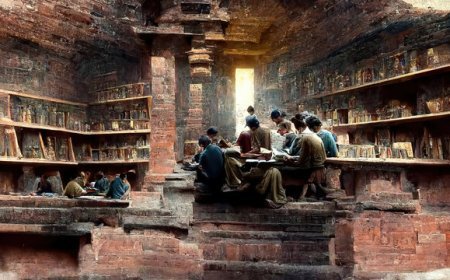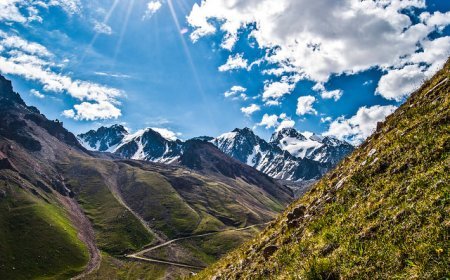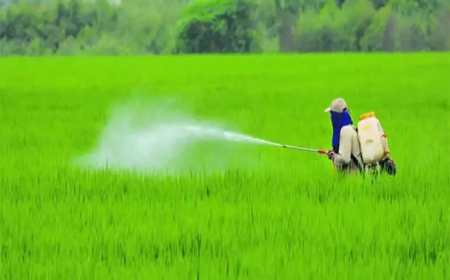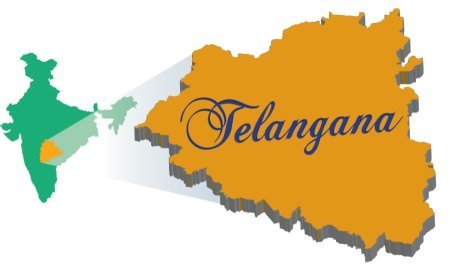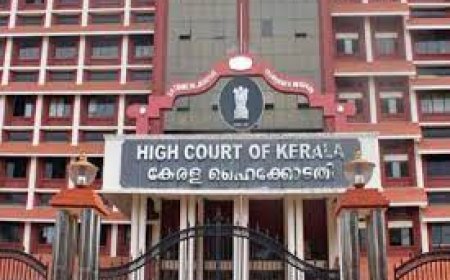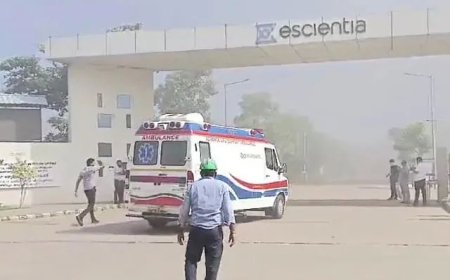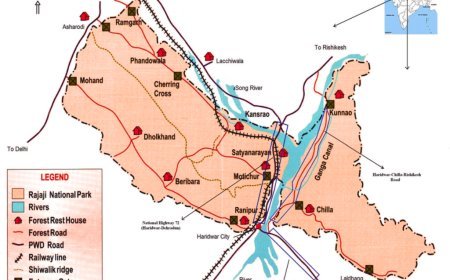NHAI's Four-Lane Project through Rajaji and Shivalik Reserves

NHAI's Four-Lane Project through Rajaji and Shivalik Reserves
News: The National Board for Wildlife (NBWL), under the Union Ministry of Environment, Forest, and Climate Change, has deferred clearance for the NHAI’s proposed four-lane highway project in Uttarakhand.
- Proposed Route: The highway was planned to pass through two critical wildlife reserves—Rajaji Tiger Reserve and Shivalik Elephant Reserve, both part of the Terai Arc Landscape (TAL).
- Reason for Deferment: The decision was made due to potential risks to wildlife corridors, habitat fragmentation, and increased human-wildlife conflicts.
- Implication: This deferment underscores the ongoing tension between infrastructure development and biodiversity conservation, emphasizing the importance of comprehensive ecological assessments before implementation.
Related Environmental Issues and Laws
- Habitat Fragmentation:
- The proposed highway poses a major risk of dividing continuous forest habitats, which are essential for species movement, particularly tigers and elephants.
- Fragmentation impacts genetic diversity, leading to reduced resilience and increased risk of extinction for several species.
- Wildlife Corridors:
- The Shivalik range acts as a critical corridor within TAL, facilitating the movement of large mammals like tigers, elephants, and leopards.
- Infrastructure projects within these corridors can obstruct migration patterns, increasing the likelihood of conflicts and fatalities.
- Applicable Environmental Laws:
- Wildlife Protection Act, 1972: Protects wildlife corridors and critical habitats within reserves, ensuring strict measures for animal safety.
- Forest Conservation Act, 1980: Governs land diversion for non-forest purposes and mandates environmental impact assessments.
- National Wildlife Action Plan (2017-2031): Prioritizes securing wildlife corridors, with measures like overpasses, underpasses, and eco-sensitive zones for animal movement.
- Environmental Impact Assessment (EIA) Notification, 2006: Requires projects to submit EIA reports, highlighting potential ecological impacts and suggesting mitigation measures.
More Information on Related Places or Topics
1. Rajaji Tiger Reserve:
o Location: Spans 820 sq. km in the Shivalik foothills across Dehradun, Haridwar, and Pauri Garhwal districts.
o Establishment: Formed in 1983 by merging Rajaji, Motichur, and Chilla Wildlife Sanctuaries.
o Biodiversity: Home to tigers, leopards, elephants, and sloth bears, along with over 300 bird species.
o Rivers: Major rivers like the Ganga, Song, and Suswa traverse the reserve, providing critical water sources and enabling ecosystem balance.
2. Shivalik Elephant Reserve:
o Location: Covers an area of 5,405 sq. km, extending across the Shivalik range.
o Significance: Notified in 2002 under Project Elephant to protect elephants and ensure the integrity of migratory routes.
o Wildlife Corridors: Key corridors include Chilla-Motichur and Rajaji-Corbett, which are essential for elephant migrations and minimizing conflicts.
o Rivers: The Ganga and tributaries like the Yamuna and Ramganga flow through the reserve, supporting both wildlife and the surrounding ecosystems.
3. Terai Arc Landscape (TAL):
o Location and Extent: Covers 14 protected areas across Uttarakhand, Uttar Pradesh, Bihar in India and the Terai region of Nepal, spanning 49,500 sq. km.
o Protected Areas in TAL:
§ India: Rajaji Tiger Reserve, Corbett Tiger Reserve, Dudhwa Tiger Reserve, Valmiki Tiger Reserve, and Shivalik Elephant Reserve.
§ Nepal: Chitwan National Park, Bardia National Park, and Shuklaphanta Wildlife Reserve.
o Rivers in TAL:
§ Ganga: Flows through Rajaji and Shivalik reserves, playing a major role in sustaining biodiversity.
§ Yamuna: Supports connectivity in the Shivalik region.
§ Ramganga: Flows through Corbett Tiger Reserve, maintaining the aquatic ecosystem.
§ Gandak and Rapti: Flow through Valmiki Tiger Reserve (India) and Chitwan National Park (Nepal), supporting varied habitats.
§ Ghaghara: Supports Dudhwa National Park and its surroundings, essential for wetland-dependent species.
o Geographical Significance: The Terai is characterized by fertile alluvial soil, dense forests, grasslands, and wetland habitats, making it an ideal home for tigers, elephants, rhinos, and numerous bird species.
o Conservation Strategies:
§ Integrated landscape management, transboundary cooperation, anti-poaching measures, and habitat restoration are key strategies to maintain connectivity across TAL.
§ Community participation in eco-development programs and buffer zone management reduces human-wildlife conflicts.
4. Local Communities and Conservation:
o Communities living around the reserves engage in eco-development programs, managing buffer zones, and participating in forest management to reduce dependency on forest resources.
o Case Study: In Uttarakhand, initiatives like the Rajaji Restoration Project focus on community involvement to improve habitat quality and reduce conflicts.
5. Climate Change Impacts:
o Changing rainfall patterns and temperature variations in TAL affect river flows, forest health, and food availability for wildlife.
o Conservation efforts include watershed management, reforestation, and sustainable land use to build climate resilience in the region.
Statistical Facts
- Area of Rajaji Tiger Reserve: 820 sq. km.
- Area of Shivalik Elephant Reserve: 5,405 sq. km.
- Area of Terai Arc Landscape: 49,500 sq. km, covering 14 protected areas.
- Length of TAL: Approx. 800 km across India and Nepal.
- TAL Wildlife Population:
- Tigers: Over 500 in TAL, making it one of the largest connected tiger populations globally.
- Elephants: Estimated 2,500 elephants across the landscape.
- Birds: More than 500 bird species, including migratory species.
MCQs on NHAI's Four-Lane Project and the Terai Arc Landscape
1. Which two reserves were affected by the NHAI's proposed four-lane project that led to its deferment by the NBWL?
A) Corbett Tiger Reserve and Valmiki Tiger Reserve
B) Rajaji Tiger Reserve and Shivalik Elephant Reserve
C) Dudhwa Tiger Reserve and Chitwan National Park
D) Shuklaphanta Wildlife Reserve and Bardia National Park
Answer: B) Rajaji Tiger Reserve and Shivalik Elephant Reserve
Explanation: The NHAI’s proposed highway was set to pass through the Rajaji Tiger Reserve and Shivalik Elephant Reserve in Uttarakhand, which are part of the Terai Arc Landscape (TAL). The project was deferred due to potential ecological impacts on these critical habitats.
2. Which major river flows through the Rajaji Tiger Reserve, supporting its ecosystem?
A) Yamuna
B) Ghaghara
C) Ganga
D) Gandak
Answer: C) Ganga
Explanation: The Ganga River flows through the Rajaji Tiger Reserve, providing essential water sources that sustain its diverse ecosystem.
3. Which act mandates the clearance process for land diversion in forest areas for non-forest purposes, such as the NHAI project?
A) Wildlife Protection Act, 1972
B) Forest Conservation Act, 1980
C) Environmental Impact Assessment Notification, 2006
D) National Wildlife Action Plan (2017-2031)
Answer: B) Forest Conservation Act, 1980
Explanation: The Forest Conservation Act, 1980 regulates the diversion of forest land for non-forest purposes and requires an assessment of ecological impacts before granting clearances.
Intermediate MCQs
4. What is the total area covered by the Terai Arc Landscape (TAL) across India and Nepal?
A) 5,405 sq. km
B) 49,500 sq. km
C) 820 sq. km
D) 800 sq. km
Answer: B) 49,500 sq. km
Explanation: The Terai Arc Landscape (TAL) covers approximately 49,500 sq. km across northern India and southern Nepal, including 14 protected areas that serve as habitats for tigers, elephants, and other species.
5. Which of the following rivers supports the Dudhwa National Park within the Terai Arc Landscape?
A) Ramganga
B) Ghaghara
C) Rapti
D) Gandak
Answer: B) Ghaghara
Explanation: The Ghaghara River supports the Dudhwa National Park and its wetland habitats, making it an integral part of the Terai Arc Landscape.
6. Which of the following is NOT a major objective of the National Wildlife Action Plan (2017-2031)?
A) Securing wildlife corridors
B) Encouraging the development of highways in protected areas
C) Ensuring safe animal passage in corridors
D) Reducing human-wildlife conflicts
Answer: B) Encouraging the development of highways in protected areas
Explanation: The National Wildlife Action Plan (2017-2031) aims to secure wildlife corridors, ensure safe animal passage, and reduce human-wildlife conflicts. It does not promote infrastructure development in protected areas.
7. Consider the following statements regarding the Terai Arc Landscape (TAL):
1. The TAL includes Rajaji Tiger Reserve, Corbett Tiger Reserve, and Valmiki Tiger Reserve in India.
2. It extends across the states of Uttarakhand, Uttar Pradesh, and Bihar in India, and the Terai region in Nepal.
3. The Gandak River is one of the major rivers flowing through the Shivalik Elephant Reserve.
Which of the above statements is/are correct?
A) 1 and 2 only
B) 2 and 3 only
C) 1, 2, and 3
D) 1 and 3 only
Answer: A) 1 and 2 only
Explanation: Statements 1 and 2 are correct as they accurately describe the Terai Arc Landscape. However, Statement 3 is incorrect because the Gandak River does not flow through the Shivalik Elephant Reserve; it flows through the Valmiki Tiger Reserve and into Nepal.
8. Which of the following best describes the ecological significance of the Shivalik Elephant Reserve?
1) It ensures connectivity between Rajaji Tiger Reserve and Corbett Tiger Reserve.
2) It is part of the Terai Arc Landscape and acts as a critical migration route for elephants.
3) It is primarily located in the plains of Bihar and is home to a large number of rhinos.
Select the correct option:
A) 1 and 2 only
B) 2 and 3 only
C) 1, 2, and 3
D) 1 and 3 only
Answer: A) 1 and 2 only
Explanation: The Shivalik Elephant Reserve connects Rajaji and Corbett reserves and serves as a crucial migratory route within the Terai Arc Landscape. Statement 3 is incorrect because it is primarily located in Uttarakhand, not in the plains of Bihar, and is focused on elephant conservation, not rhinos.
9. Regarding the impacts of the NHAI's proposed four-lane project on the Terai Arc Landscape, consider the following statements:
1) It could lead to increased habitat fragmentation, affecting tiger and elephant populations.
2) It would enhance connectivity for local communities without affecting wildlife corridors.
3) The project would need clearance under the Wildlife Protection Act, 1972, due to its location in protected areas.
Which of the above statements is/are correct?
A) 1 and 2 only
B) 1 and 3 only
C) 2 and 3 only
D) 1, 2, and 3
Answer: B) 1 and 3 only
Explanation: Statements 1 and 3 are correct, as the project could increase habitat fragmentation and requires clearance under the Wildlife Protection Act, 1972 due to its location in protected areas. Statement 2 is incorrect because the project may disrupt wildlife corridors, rather than enhance connectivity for local communities alone.
What's Your Reaction?




















